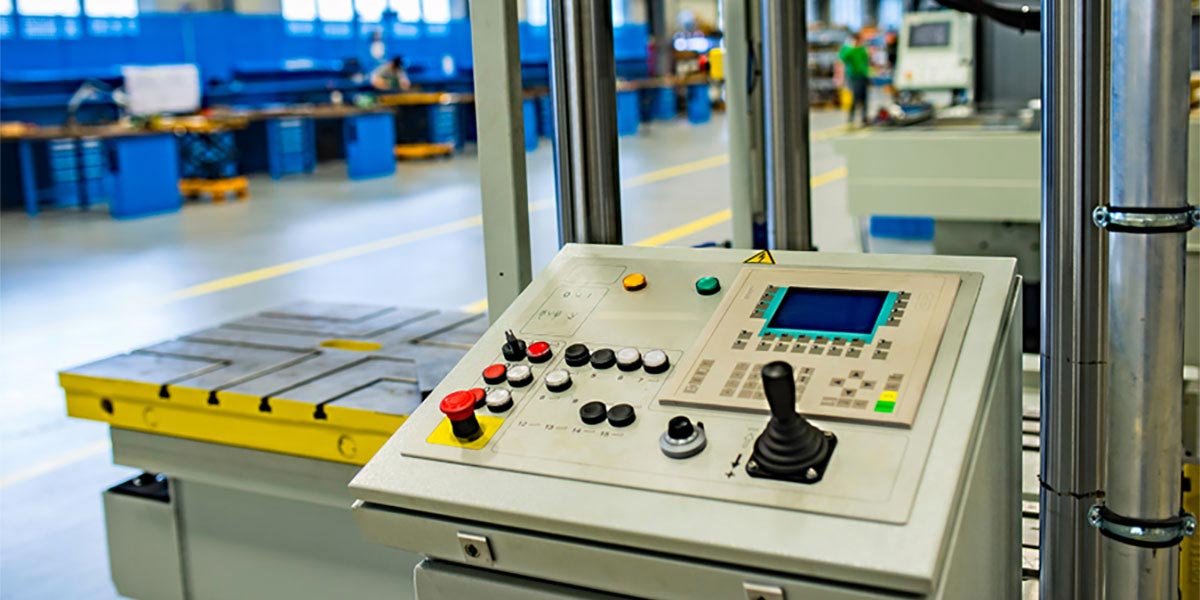
OEE: It’s More than Just a Number | Improve Your Manufacturing Process
As a manufacturer, you are likely familiar with the term overall equipment effectiveness (OEE) and that this number can provide a rough measure of how efficient you are being with your processes and resources. You probably even have some sort of software or system in place to calculate your OEE score. But do you know what this number really means? And what, if anything, are you doing with this information?
Many manufacturers get caught in the trap of focusing on what their OEE score is instead of figuring out how to turn that score into action. While knowing your OEE score is a useful data point, it’s just that – a singular data point. Instead, your OEE score should serve as an indicator that can be used to drive action and identify your largest ROI opportunities. By digging into the reasons behind your OEE score, we believe this is where the really useful information lies.
Therefore, rather than looking at OEE as just a number, the goal should be to have actionable data points that can be derived from OEE. This can be done by understanding the subcomponents and inputs that make up OEE and having the ability to really analyze that information. Let’s explore three steps for how to do this and get the most out of your OEE solution.
Step 1. Align Internally on What You Want to Get Out of OEE
One of the biggest challenges with OEE in general is that beyond just knowing the goal number for OEE, everyone in an organization likely has a different view on what they should be getting out of the system. The three data points that go into calculating OEE are not up for debate – equipment uptime (availability), equipment efficiency while it is up and running (performance), and the amount of waste produced (quality). However, understanding what specifically goes into these data points and the insight gained through them to effectively make change is where things are less defined.

Getting your organization aligned on what can be achieved with OEE should start by tuning OEE metrics to what you actually do on your factory floor. One common area where we often see discrepancies is the difference between the specs of how a machine can run and how a manufacturer runs it based on what is best for their operations. For example, a machine may be able to make 100 parts per minute (ppm), but you’ve found it’s best to run it at 90 ppm. If you never change your set point for the cycle rate from 100 ppm to 90 ppm, then you will never achieve your cycle rate goal and performance will always suffer. Or, if run rate varies by product, the target rate for each product should be dynamically tied to your OEE calculation to ensure accuracy between production runs.
The same type of discrepancies often happen with availability. Not all manufacturers run production around the clock. Some may run two shifts instead of three and some do rolling breaks while others shut down for breaks. Therefore, you need to define available versus unavailable runtime for your specific operations. This definition should also include a method for defining when a machine is in maintenance mode. By properly setting up the performance and availability metrics your OEE system needs to track you will not only inherently improve your OEE score, but you will also improve the accuracy of what your OEE system is identifying as an issue.
Step 2. Connect with Your Control System for Maximum Insight
While it’s easy to physically see if a machine is running or not, the issue is that it’s not just this singular data point on up or downtime that we should care about. The underlying issue causing the machine to breakdown is what we need to know. Oftentimes, this can be difficult to track because OEE systems are designed using point solutions, which means the system only has a couple discrete (counting) inputs to judge what’s going on. For example, a machine may use photo eyes at the beginning and end of each work cell to count how many units go in and how many come out. This system can provide operators with the number of rejected parts or tell the operator that no parts are coming out of the machine, which means it is stopped or there is a jam somewhere. This is useful information but there is no context on why the parts are getting rejected or why the machine is stopped.
Instead of relying on point solutions, if an OEE system is directly tied into the machine’s control system, beyond just knowing something was rejected or a machine is down, there is actionable information available. By directly integrating an OEE solution into the control system, insight into what happened to cause availability, performance, or quality issues is available. This increases the accuracy and speed of identifying and fixing issues because the system knows what work cell wasn’t functioning and it can provide that reason to the OEE software. Additionally, with this approach, downtime and “reason” data, such as equipment alarms, is visible in one place rather than needing to note the time of an event in the OEE system and reviewing data on local equipment to find a cause.
Step 3. Draw on Existing Data
Information from the OEE solution is just one data source of many on the plant floor, and it shouldn’t be viewed in a silo. As discussed in another recent post, most manufacturers aren’t actually struggling with collecting data. They likely have more data than they will ever need. Instead, their real issue is figuring out how to effectively use that data.
To tie this into OEE, first, think about what your OEE software does and does not have access to. What are the data points you are missing or that operators need to collect manually? For example, when downtime occurs causing availability to suffer, does the operator have to manually make a note or scan a barcode to track what happened? Or is there another system already recording this information that you could tie into to automatically have more context on why downtime occurred?
Additionally, if your organization already has a historian that is monitoring different process variables, it would be ideal to integrate the OEE report with the historian. This will allow you to drill into a different data sources for more context on what was going on with the system when performance, availability, or quality may have suffered.
In general, it should be easy to pass parameters from one report to another and show detailed trends for a piece of equipment to look for anomalies that way. By cross-referencing external material or data sources with data from the OEE system, you will have actionable information on why a machine is not operating at peak performance, providing maximum availability, or is struggling with quality issues.

Improve Manufacturing Processes by Effectively Using OEE
As discussed, knowing your OEE score is not the solution to your problems. This number may indicate you have a problem, and if your OEE solution is effectively setup with the rest of your systems, it can help you identify and fix that problem.
If this concept sounds intriguing, but it seems difficult or overwhelming to tie your OEE solution into your control system or existing data sources, it may be a good time to reach out to a third-party integrator to discuss options. At Cybertrol Engineering, our experienced engineers can help you determine the most effective way to leverage machine insight to get to the root cause of your less-than-ideal OEE metrics.
Learn more about Cybertrol’s manufacturing intelligence solutions, such as performance-OEE
Recent Posts
- PlantPAx in Optix | What Cybertrol Brought to Automation Fair 2025 December 16, 2025
- Smart Manufacturing for Food & Beverage | Cybertrol at EATS 2025 December 12, 2025
- Cybertrol Again Honored with Hormel Foods Spirit of Excellence Award October 27, 2025
- Who Beat the Boss This Year? Highlights from Cybertrol’s 6th Annual 5K October 8, 2025
